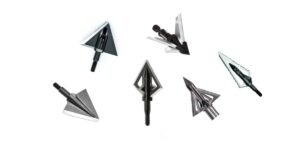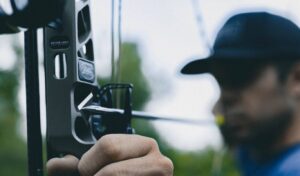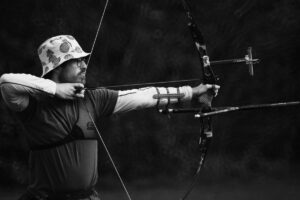Isn’t it wonderful when you finally hit that perfect shot with your crossbow, and the deer drops right where it stands?
Unfortunately, that’s not always how things play out in real life. Even fatally wounded deer can sometimes run a considerable distance before they succumb to their injuries.
So, how long should I wait after shooting a deer with my crossbow? Well, shot placement is key here.
If you are unsure about the shot placement or the effectiveness of the shot, it’s generally agreed to wait for at least 30 minutes before recovering the animal.
Contents (Jump to Topic)
ToggleWhen Should I Start Searching For The Deer?
Crossbow hunters (the same is true for any bow hunters) should typically give at least 20 to 30 minutes before starting their search, ensuring that the deer has ample time to expire without being pushed further away by human presence.
This approach reduces the distance a deer may travel while injured, ultimately increasing your chances of successfully recovering the animal.
Next, we will discuss whether or not a full thirty-minute wait is necessary in all situations.
read.. will blood spook deer away
Should You Really Wait 30 Minutes Before Blood Trailing A Deer?

Now that we’ve discussed when to start searching for a deer after shooting it, let’s dive deeper into whether waiting 30 minutes before blood trailing is necessary.
Some argue that the traditional 30-minute wait time may not always be necessary, especially if you have observed signs of a hit to the vital organs.
Shot placement significantly determines how long you should wait before pursuing the injured animal.
If you’re confident in your shot and have evidence of good blood loss on the arrow or at the site of impact, then waiting 30 minutes might not be required.
On the other hand, many experienced hunters advocate sticking with the normal waiting period of at least 30 minutes after shooting a deer with a crossbow anyways.
Patience is essential when hunting as rushing into blood trailing can lead to spooking or losing your game altogether.
The next question is how far deer run after being shot with an arrow or bolt.
How Far Do Deer Run After Being Shot With A Crossbow?
As the iconic hunter in Ernest Hemingway’s ‘The Short Happy Life of Francis Macomber’ discovered, tracking a wounded animal can be an unpredictable and challenging task.
The distance a deer may run after being shot with a crossbow depends on several factors including the effectiveness of your crossbow shot placement, the severity of injury, and how quickly it experiences blood loss.
These elements determine whether you’ll find your quarry within yards or miles from where they were initially hit.
- A well-placed lung or heart shot: Deer will typically travel less than 100 yards before collapsing.
- Liver shots: Deer may run between 100 to 200 yards before succumbing to their injuries.
- Muscle hits: You might have to follow them for up to a mile or more as these wounds are not immediately fatal.
- Gut shots: This is one of the most difficult recovery scenarios since deer can cover great distances with minimal external bleeding signs.
Recovering Gut Shot Deer
Recovering a gut-shot deer can be a challenging and time-consuming process. It’s essential to give the animal enough time to expire, as rushing in may push them further away.
In this situation, patience is key; waiting at least 12 hours before attempting to recover the deer will increase your chances of success.
Be prepared for sparse blood trails, as internal wounds often produce less visible signs than more superficial injuries.
As you continue searching for the downed animal, keep an eye out for any disturbances on the ground that might indicate their path through the woods.
Blood Tracking Whitetails
When it comes to blood-tracking whitetail deer, having a well-thought-out strategy is vital. This is true for all deer hunters who want to successfully locate their prey.
Being able to interpret the signs left by the injured animal helps ensure that all your hard work pays off and that you get the most out of your hunting experience.
This process requires patience, keen observation skills, and knowledge of various factors related to blood trials.
- After taking your shot, wait at least 30 minutes before beginning to track.
- Look for initial signs where you last saw the deer standing or running; often there will be hair or small amounts of blood present.
- Follow any visible blood trail while also paying attention to other possible indicators such as broken branches, disturbed leaves on the ground, or tracks in soft soil.
- Recognize different types of blood (bright red indicates lung hit whereas dark red suggests liver hit) as this can help determine how far away the deer might be.
Blood tracking whitetails don’t have to be an overwhelming task if approached methodically and patiently.
Allow ample time for the deer to settle after being shot with a crossbow, assess available clues from both blood and environmental disturbances and understand what certain colors signify regarding injury location.
Even novice deer hunters can increase their chances of locating their harvest.
Remember that practice makes perfect – each successful tracking event builds confidence and hones essential skills needed for future hunts.
Before you go …
In the thrilling moments after taking a deer with a crossbow, it’s natural to feel an overwhelming mix of excitement and anticipation.
However, patience is a virtue in these situations – taking your time before embarking on the search for your prize can make all the difference between success and disappointment.






